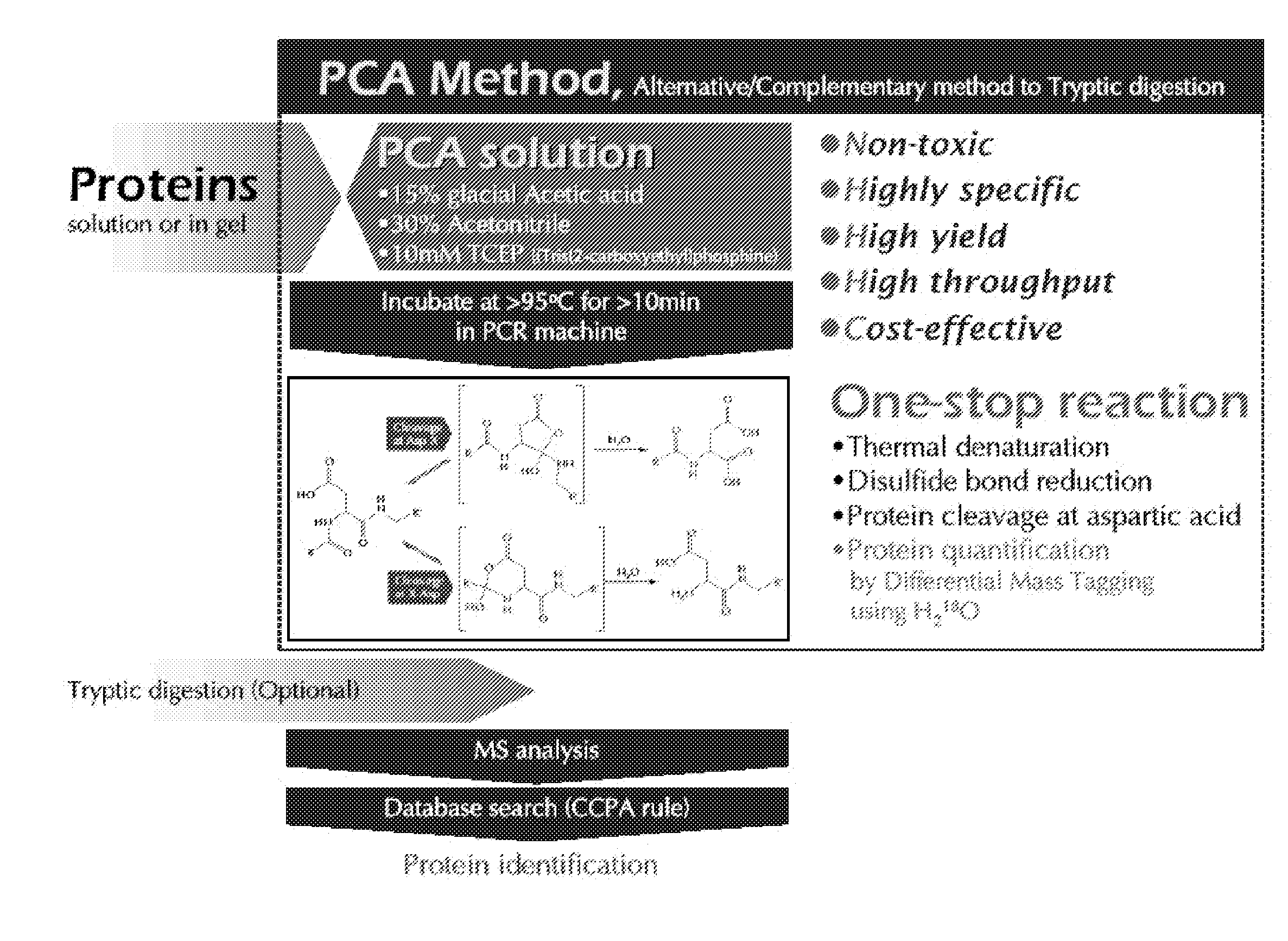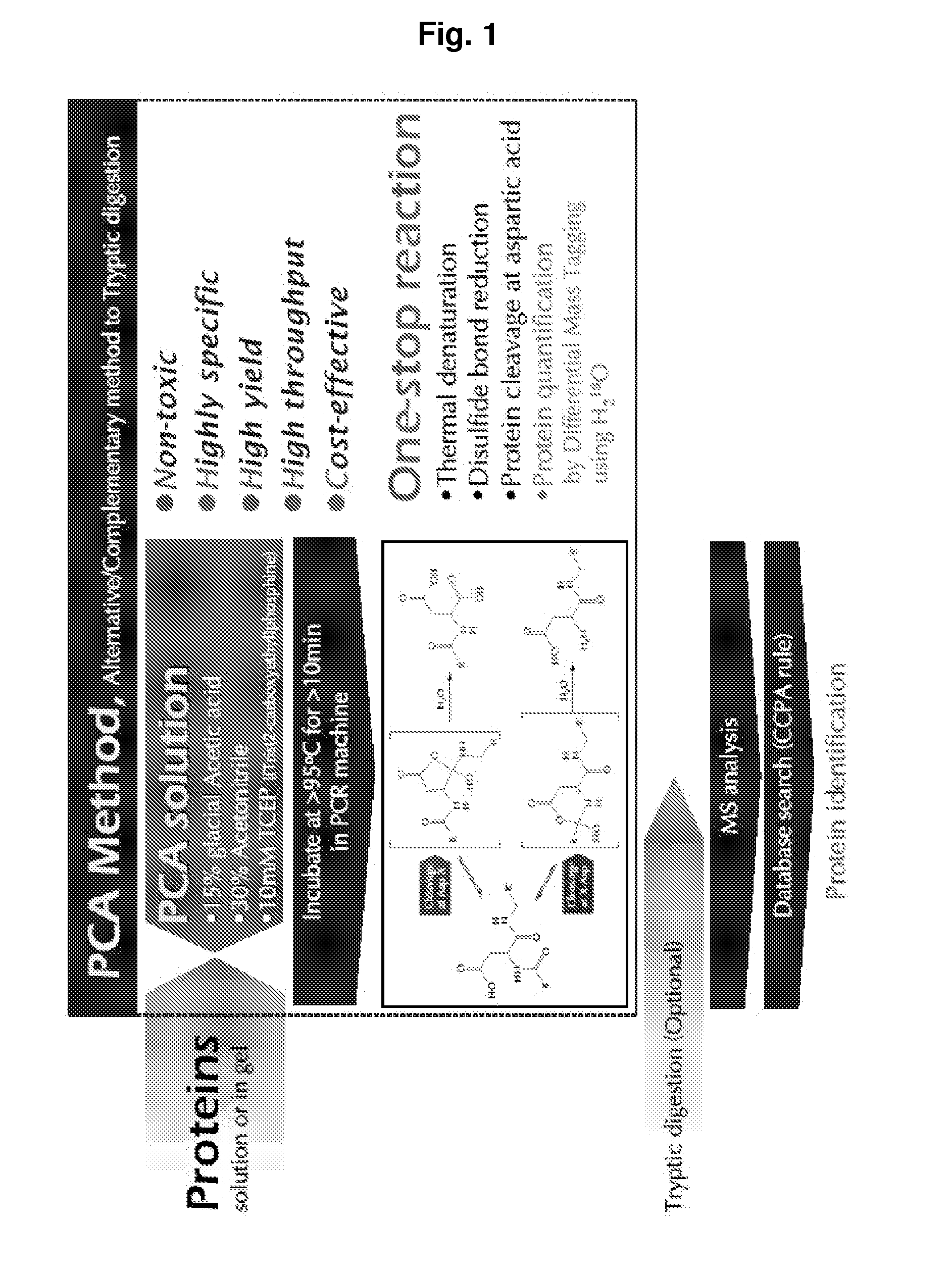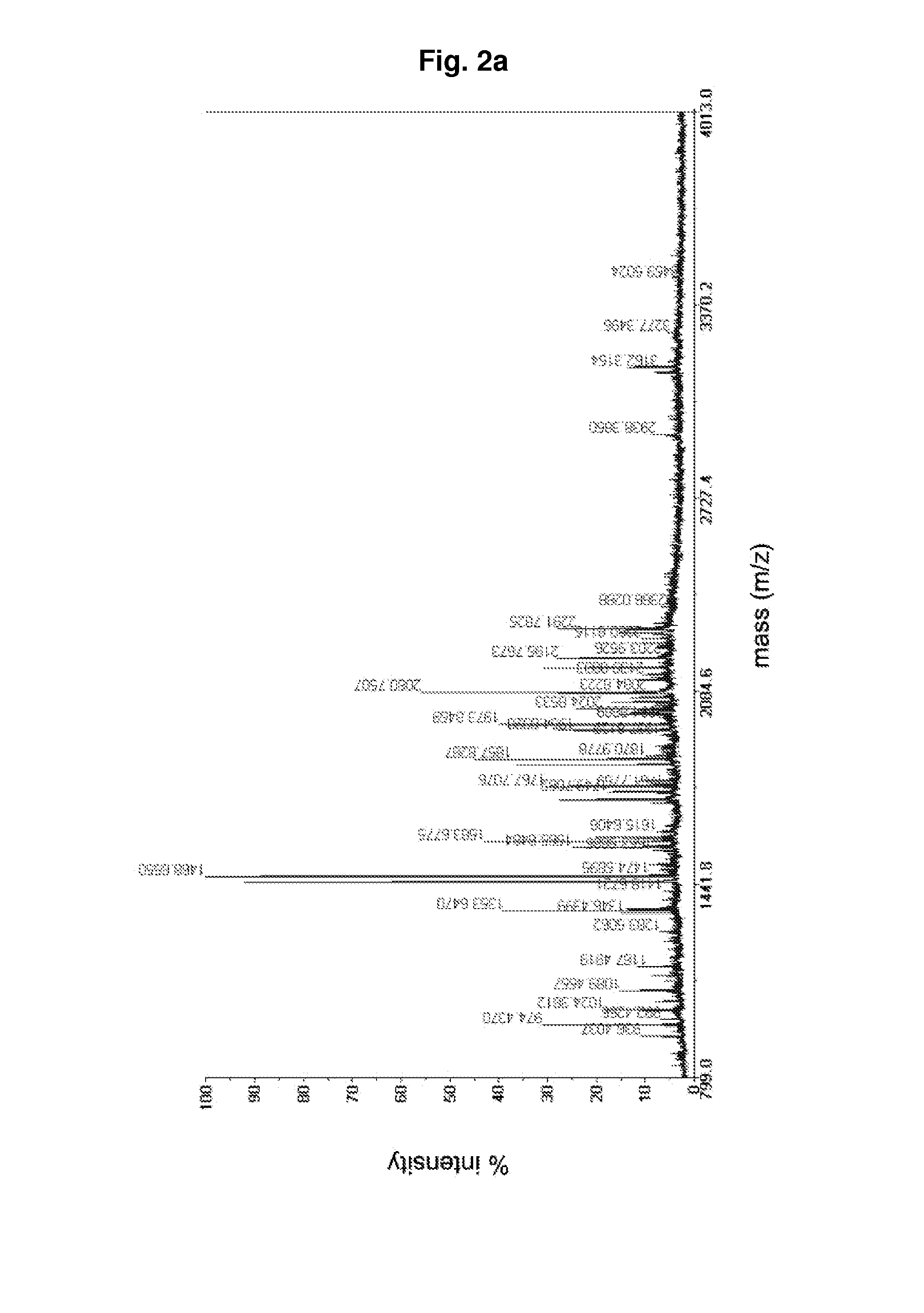Protein Cleavage at Aspartic Acid Using Chemical Reagents
a technology of aspartic acid and chemical reagents, applied in the field of protein processing, can solve the problems of requiring additional purification, unable to explain the effects of simple steps, and unable to choose the hydrophobic or very basic protein method of tryptic digestion
- Summary
- Abstract
- Description
- Claims
- Application Information
AI Technical Summary
Benefits of technology
Problems solved by technology
Method used
Image
Examples
Embodiment Construction
[0023]The present invention provides a polypeptide hydrolyzing composition comprising an acid component, water miscible organic solvent and a reducing agent. The acid component is trifluoroacetic acid, phosphoric acid, propionic acid, HCl, o-iodobenzoic acid, glacial acetic acid, or any acid having buffering capacity near pH 2. Preferably, the acid component can be a mixture of trifluoroacetic acid, phosphoric acid, propionic acid, HCl, and o-iodobenzoic acid.
[0024]pH of hydrolyzing solution at time of reaction is in the range of 1.5 to 2.5 The hydrolyzing solution comprises at least 2 to 30 (v / v) % glacial acetic acid. The hydrolyzing solution comprises 15 (v / v) % glacial acetic acid, pH 2.0.
[0025]The water miscible organic solvent is Acetonitrile, DMF (Dimethyl formamide), DMSO (Dimethylsulfoxide), THF (Tetrahydrofurane), or an alcohol. The alcohol is methanol or ethanol. For example, the water miscible organic solvent is at least 5-70 (v / v) % Acetonitrile, preferably 30 (v / v) % A...
PUM
| Property | Measurement | Unit |
|---|---|---|
| reaction temperature | aaaaa | aaaaa |
| reaction temperature | aaaaa | aaaaa |
| pH | aaaaa | aaaaa |
Abstract
Description
Claims
Application Information
 Login to View More
Login to View More - R&D
- Intellectual Property
- Life Sciences
- Materials
- Tech Scout
- Unparalleled Data Quality
- Higher Quality Content
- 60% Fewer Hallucinations
Browse by: Latest US Patents, China's latest patents, Technical Efficacy Thesaurus, Application Domain, Technology Topic, Popular Technical Reports.
© 2025 PatSnap. All rights reserved.Legal|Privacy policy|Modern Slavery Act Transparency Statement|Sitemap|About US| Contact US: help@patsnap.com



